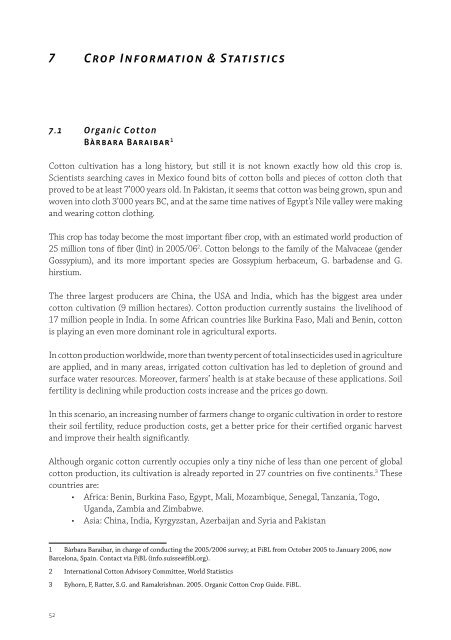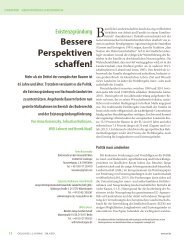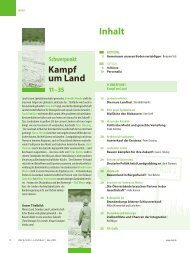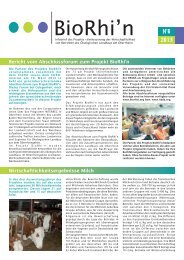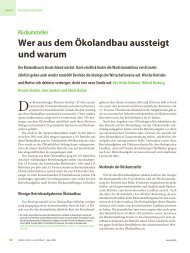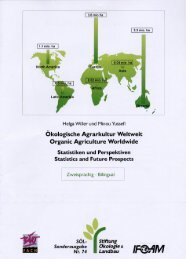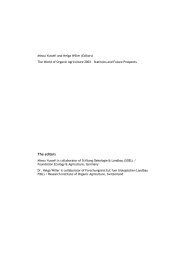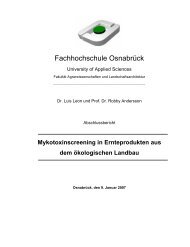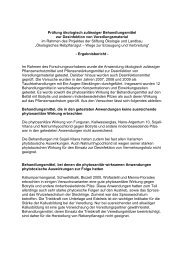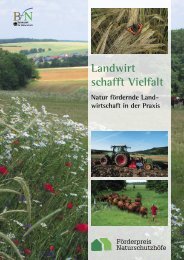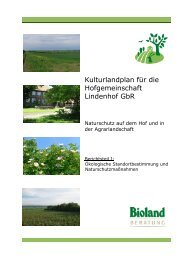the world of organic agriculture - Organic Eprints
the world of organic agriculture - Organic Eprints
the world of organic agriculture - Organic Eprints
You also want an ePaper? Increase the reach of your titles
YUMPU automatically turns print PDFs into web optimized ePapers that Google loves.
7 Crop Information & Statistics<br />
7.1 <strong>Organic</strong> Cotton<br />
Bàrbara Baraibar 1<br />
Cotton cultivation has a long history, but still it is not known exactly how old this crop is.<br />
Scientists searching caves in Mexico found bits <strong>of</strong> cotton bolls and pieces <strong>of</strong> cotton cloth that<br />
proved to be at least 7’000 years old. In Pakistan, it seems that cotton was being grown, spun and<br />
woven into cloth 3’000 years BC, and at <strong>the</strong> same time natives <strong>of</strong> Egypt’s Nile valley were making<br />
and wearing cotton clothing.<br />
This crop has today become <strong>the</strong> most important fiber crop, with an estimated <strong>world</strong> production <strong>of</strong><br />
25 million tons <strong>of</strong> fiber (lint) in 2005/06 2 . Cotton belongs to <strong>the</strong> family <strong>of</strong> <strong>the</strong> Malvaceae (gender<br />
Gossypium), and its more important species are Gossypium herbaceum, G. barbadense and G.<br />
hirstium.<br />
The three largest producers are China, <strong>the</strong> USA and India, which has <strong>the</strong> biggest area under<br />
cotton cultivation (9 million hectares). Cotton production currently sustains <strong>the</strong> livelihood <strong>of</strong><br />
17 million people in India. In some African countries like Burkina Faso, Mali and Benin, cotton<br />
is playing an even more dominant role in agricultural exports.<br />
In cotton production <strong>world</strong>wide, more than twenty percent <strong>of</strong> total insecticides used in <strong>agriculture</strong><br />
are applied, and in many areas, irrigated cotton cultivation has led to depletion <strong>of</strong> ground and<br />
surface water resources. Moreover, farmers’ health is at stake because <strong>of</strong> <strong>the</strong>se applications. Soil<br />
fertility is declining while production costs increase and <strong>the</strong> prices go down.<br />
In this scenario, an increasing number <strong>of</strong> farmers change to <strong>organic</strong> cultivation in order to restore<br />
<strong>the</strong>ir soil fertility, reduce production costs, get a better price for <strong>the</strong>ir certified <strong>organic</strong> harvest<br />
and improve <strong>the</strong>ir health significantly.<br />
Although <strong>organic</strong> cotton currently occupies only a tiny niche <strong>of</strong> less than one percent <strong>of</strong> global<br />
cotton production, its cultivation is already reported in 27 countries on five continents. 3 These<br />
countries are:<br />
• Africa: Benin, Burkina Faso, Egypt, Mali, Mozambique, Senegal, Tanzania, Togo,<br />
Uganda, Zambia and Zimbabwe.<br />
• Asia: China, India, Kyrgyzstan, Azerbaijan and Syria and Pakistan<br />
1 Bàrbara Baraibar, in charge <strong>of</strong> conducting <strong>the</strong> 2005/2006 survey; at FiBL from October 2005 to January 2006, now<br />
Barcelona, Spain. Contact via FiBL (info.suisse@fibl.org).<br />
2 International Cotton Advisory Committee, World Statistics<br />
3 Eyhorn, F, Ratter, S.G. and Ramakrishnan. 2005. <strong>Organic</strong> Cotton Crop Guide. FiBL.<br />
52


